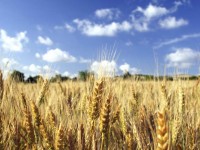In this series of articles I’d like to go into detail about the three greatest myths in animal nutrition that I deal with on a daily basis. Using my own experience as part of the Crecora Mills Animal Nutrition team and from other nutritionists based both in this country and abroad here is a broad outline of how we can save you money and increase your animals performance.
Myth number 1: Protein
What do you know about animal feed protein?
Protein in feed has historically been the most expensive element of a formulation. Animal feed Protein comes from a lot of different sources around the world. Soya bean meal from North and South America, Distillers grains and Rapeseed meal from the E.U and worldwide are the main protein sources that we use in our feeds. These are vulnerable to huge market fluctuations due to increased speculation from investment funds and global shortages due to weather events and fluctuating global stock levels.
Not all protein sources are as good as others. We use a lot of HiPro Soya meal in our feed along with Distillers grains and Rapeseed extract. Beware of buying products with low quality protein sources such as Sunflower extract.
I used to hear this a lot when I was starting out as a nutritionist. “My cows/Beef cattle are not performing….. I need to increase the protein level of the diet” Before I recommend an expensive high protein product or diet to a customer I always try to look at the bigger picture to see if it is really necessary.
In a lot of cases the reason for cow performance may not be linked to protein level in the diet.
- Grass or fodder quality can change on a daily basis. I have seen superb 80+ DMD silage in bales and a pit where cows dropped performance for a few weeks after changing from bales to the pit. After analysing the details we found that the silage bales while being high 80+DMD silage had a higher level of fibre than the same pit silage. It was also not chopped as fine so when the animals ate the baled silage it took their Rumen longer to break it down. When they went to the pit silage their Rumen was not quite as accustomed to this short chopped lower fibre silage and they were encountering a significant drop in the ph of their Rumen causing a slight case of Acidosis or what we call SARA. Sub Acute Ruminal Acidosis. This slight drop corrected itself after 3 weeks and normal service resumed. Our advice on changing over from one feed type to another is to do it gradually over a two to three-week time period and if on high levels of concentrate feeding consider using one of our many products with our very effective Rumen Buffer pack included. This Rumen Buffer pack contains a buffering agent and an active yeast to help aid efficient Rumen digestion.
- Life cycle of the animal. Increased protein is most effective in younger stock such as calves and yearlings which is why our CalfMax nuts, our Calf rations and StockGro feeds are high in high quality protein. The protein provides the building blocks to grow a larger frame to carry more weight and mature faster. Once an animal starts to mature the high levels of protein are not nearly as effective and eventually will hold the animal back as they will have to process excess protein into urea and release it from their body as urine. Literally peeing away the farm profits.
- The animals stage of production has a huge influence on their protein requirement. When high performing animals are on a mainly silage diet they have a larger requirement for protein as the silage will not provide enough for their diet. When the same animals are out on grass, especially high protein second rotation grass then they do not require high levels of protein. Rather it causes them to convert excess protein into urea and expel it as urine. With so many customers so happy using our very effective Dairy Max18% nuts during the winter we have quite a job to change to the sister formulation Dairy MaxGrass fertility nut when on high protein grass. Dairy MaxGrass nut is formulated with 30% maize, beetpulp soya hulls barley and soya to provide a high fibre very high feeding value to cows on grass and contains a rumen buffer and active yeast along with a fertility mineral pack.
- “Protein helps fertility” It can help things along undoubtedly but we have had better fertility results from feeding balanced energy saturated products such as Dairy Max18 and Dairy MaxGrass fertility nuts. We look at the energy intake of the animal rather than the crude protein intake. The more energy the animal has the better the performance, the lower the body weight loss, the better quality milk produced and the more energy the cow has left over to start the breeding cycle. If we restrict a cows feeding especially before and after calving she will prioritize firstly making quality of milk for her calf, secondly making volumes of milk for the calf, thirdly keeping herself alive and not losing too much body condition and only then when we have fed these first 3 functions will she use what energy is left to start the breeding cycle.
I’d like to have shown in this brief article about how it is important to match the Animals requirements to what level we are feeding them in order to make the best, most efficient and – use of our feed materials.
Feel free to sign up to our newsletter for the next 2 articles on the 3 greatest myths in Animal Nutrition in Ireland!
For any other enquiries or to speak to one of our nutrition advice team please contact us on 061 355186
Paul O’Connell
Head nutritionist
Crecora Mills

